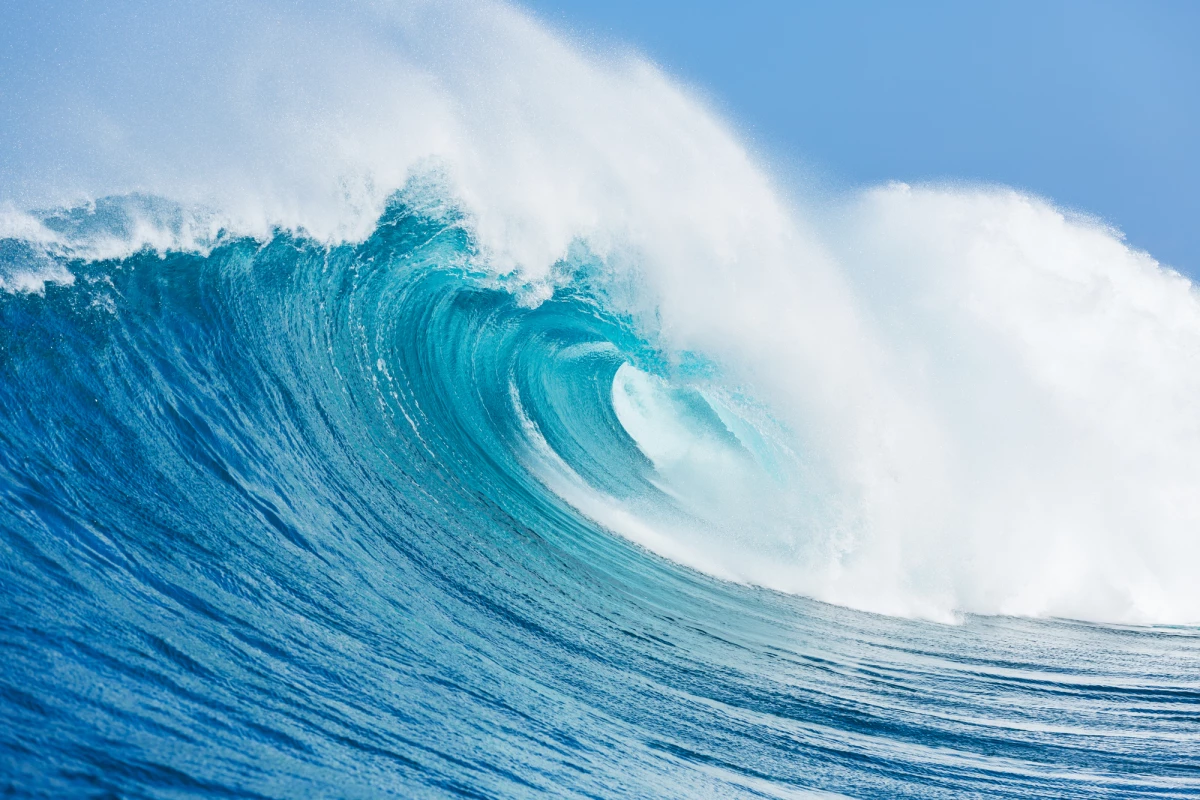Also known as freak or killer waves, rogue waves are those that pop up suddenly as a great deal larger than others in a given set, posing serious danger to any ships or infrastructure unfortunate enough to be in the area. Researchers are reporting a record-setting new example of this phenomenon, with a four-story-tall rogue wave that occurred off the coast of Canada confirmed as the most extreme ever measured.
The record-setting rogue wave was measured off the coast of Ucluelet on Vancouver Island in November 2020 at a height of 17.6 meters (57.7 ft). Waves regularly reach greater heights than this, and some of are even ridden by thrill-seeking surfers such as those that descend on Nazaré in Portugal when the massive swells roll in each year.
But rogue waves earn their frightening reputation for their unpredictable nature, and are technically defined as being more than double the height of the waves around them. Unlike tsunamis that are largely caused by seismic activity, rogue waves take shape due to strong currents, winds and or storms that can cause separate waves to merge into a giant wall of water.
The first of these ever recorded took place off the coast of Norway in 1995 and measured 25.6 m (84 ft), among surrounding waves of around 12 m (39 ft). The Ucluelet wave was far shorter than this, but because the waves around it measured only 6 m (19.7 ft) or so, it earns the title as the most extreme rogue wave ever recorded.
"Proportionally, the Ucluelet wave is likely the most extreme rogue wave ever recorded," said Johannes Gemmrich, from the University of Victoria, and an author on a study detailing the event. "Only a few rogue waves in high sea states have been observed directly, and nothing of this magnitude. The probability of such an event occurring is once in 1,300 years."
Rogue waves are traditionally difficult to detect and measure, but are gaining more attention due to the dangers that they pose. In 2016 we looked at technology under development at MIT that uses a special algorithm to spot clusters of waves that are likely to merge into a giant rogue wave. The measurement of this Ucluelet wave was collected by Canadian outfit MarineLabs, whose network of sensor buoys placed along the coast of North America aim to improve forecasting of such events.

"The unpredictability of rogue waves, and the sheer power of these 'walls of water' can make them incredibly dangerous to marine operations and the public," says MarineLabs CEO, Dr. Scott Beatty. "The potential of predicting rogue waves remains an open question, but our data is helping to better understand when, where and how rogue waves form, and the risks that they pose."
The company's CoastAware network currently comprises 26 sensor buoys, but is expected to reach close to 70 by the end of 2022.
"We are aiming to improve safety and decision-making for marine operations and coastal communities through widespread measurement of the world's coastlines," says Beatty. "Capturing this once-in-a-millennium wave, right in our backyard, is a thrilling indicator of the power of coastal intelligence to transform marine safety."
You can check out a recreation of the freak Ucluelet wave in the video below, while the research was published in the journal Scientific Reports.
Source: MarineLabs via Cision





